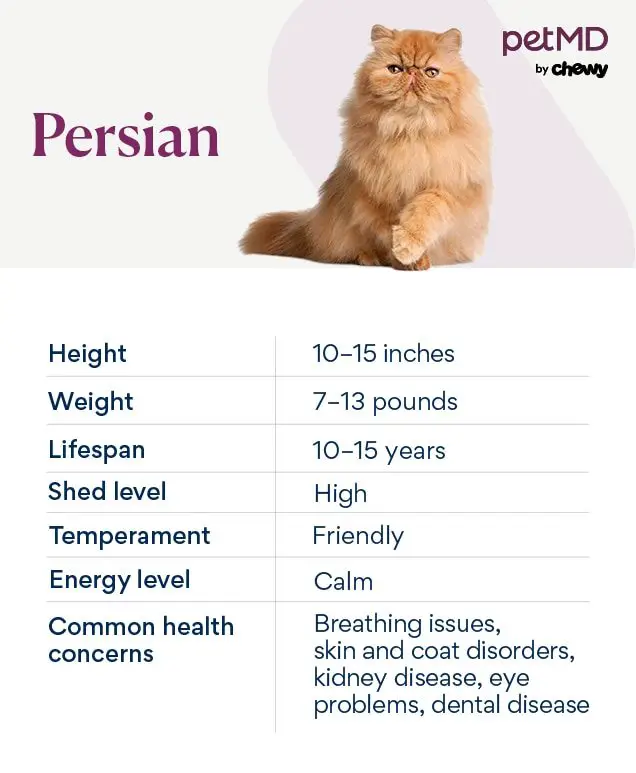When it comes to breeding your Persian cat, it’s important to consider the well-being of your furry friend. As Persian cats are a brachycephalic breed with potential health issues, it is recommended to stop breeding them around the age of 7-8 years old. By this age, their bodies may not be able to handle the stress of pregnancy and caring for kittens. It’s essential to prioritize their health and happiness above all else. When is the appropriate age to stop breeding a Persian cat?
Have you ever wondered when the right time is to stop breeding your Persian cat? Knowing when is the appropriate age to retire your cat from breeding can help ensure their health and well-being. In this article, we will discuss the factors to consider and guidelines to follow when determining the best age to stop breeding your Persian cat.

This image is property of image.petmd.com.
Factors to Consider
Breeding a Persian cat is a significant responsibility that involves careful planning, monitoring, and care. There are several factors to consider when deciding when to stop breeding your cat, including age, health, genetics, and overall well-being.
Age
The age of your Persian cat plays a crucial role in determining when to stop breeding. Cats, like humans, age differently, and their reproductive abilities decline with age. As a general guideline, most breeders recommend retiring female Persian cats between the ages of 5 and 7 years old. Male cats can continue breeding up to around 8 years old, depending on their overall health and fertility.
Health
The health of your Persian cat should be a top priority when deciding when to stop breeding. Breeding can be physically demanding on cats, especially females, who experience multiple heat cycles and pregnancies over their breeding career. Regular veterinary check-ups, including blood work and genetic testing, can help evaluate your cat’s overall health and reproductive capabilities.
Genetics
Genetics play a significant role in determining when to stop breeding your Persian cat. Breeding cats with known genetic health issues or hereditary conditions can result in passing on these traits to their offspring. It is essential to work with a reputable breeder and consider genetic testing to ensure the health and well-being of future generations.
Well-being
The overall well-being of your Persian cat should always be prioritized. Breeding can be stressful for cats, both physically and emotionally. Signs of stress in breeding cats can include changes in behavior, appetite, and grooming habits. It is crucial to monitor your cat closely and provide a safe, comfortable environment throughout their breeding career.
Guidelines for Retiring a Breeding Cat
Knowing when to retire your Persian cat from breeding is a personal decision that should be based on the individual cat’s health, age, and well-being. It is essential to follow guidelines and best practices to ensure a smooth transition into retirement and a happy, healthy life for your cat.
Spaying and Neutering
One of the most common practices when retiring a breeding cat is spaying or neutering. Spaying (for females) and neutering (for males) can help prevent unwanted pregnancies and eliminate the risk of certain health issues, such as uterine infections and testicular cancer. It is recommended to spay or neuter your cat before transitioning into retirement to ensure their health and well-being.
Finding a Forever Home
Finding a forever home for your retired breeding cat is crucial for their happiness and well-being. Cats that have been used for breeding may require specific care and attention, such as a quiet environment, routine feeding schedule, and regular veterinary check-ups. It is essential to find a loving, responsible owner who can provide the necessary care and attention your cat needs in retirement.
Adjusting to Retirement
Adjusting to retirement can be a significant transition for breeding cats. It is essential to provide your cat with a safe, comfortable environment and establish a routine to help ease the transition. Enriching your cat’s environment with toys, scratching posts, and comfortable bedding can help keep them mentally and physically stimulated in retirement.
Monitoring Health and Well-being
Regular monitoring of your retired breeding cat’s health and well-being is essential to ensure they are happy and healthy in retirement. Schedule regular veterinary check-ups, including blood work and dental exams, to monitor your cat’s overall health. Watch for changes in behavior, appetite, and grooming habits that may indicate underlying health issues.
This image is property of qph.cf2.quoracdn.net.
Conclusion
Deciding when to stop breeding your Persian cat is a personal decision that should be based on the individual cat’s age, health, genetics, and overall well-being. By considering these factors and following guidelines for retiring a breeding cat, you can ensure a smooth transition into retirement and a happy, healthy life for your cat. Remember to prioritize your cat’s health and well-being above all else and provide them with the love and care they deserve in retirement.
This image is property of qph.cf2.quoracdn.net.

